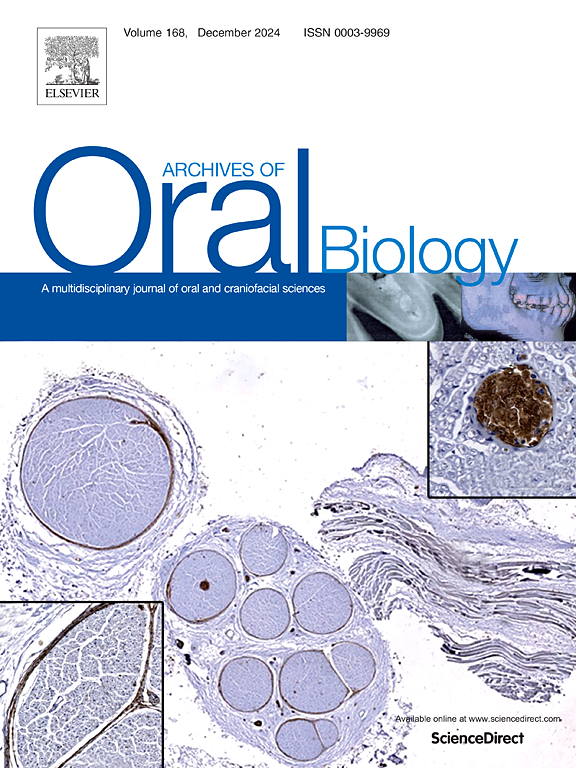在体外模型中,接触电子烟会增加龋齿风险并改变牙齿表面。
IF 2.2
4区 医学
Q2 DENTISTRY, ORAL SURGERY & MEDICINE
引用次数: 0
摘要
目的:电子香烟越来越受欢迎,其尼古丁含量与传统烟草香烟相当。然而,这些替代吸烟设备对牙齿健康的潜在不良影响仍不确定。本研究调查了牙齿表面致龋可能性的变化,并分析了电子烟中使用的甜味电子烟液所产生的气溶胶化学成分的变化:设计:使用电子烟测试机模拟吸烟。根据吸烟情况将 80 个牙釉质、牙本质和根部牙本质标本分为两组:吸烟前和吸烟后。响应变量为显微硬度(10 个)、扫描电镜(5 个)和傅立叶变换红外光谱(5 个)。通过 HPLC-UV/Vis 对吸烟前和吸烟后的电子液体进行分析。数据采用单因子方差分析和 Tukey 检验,显著性水平为 5%。对扫描电镜、傅立叶变换红外光谱和 HPLC-UV/Vis 数据进行了定性分析:吸烟前后珐琅质的显微硬度值较高,吸烟后所有基质的显微硬度都显著降低。所有牙本质样本都呈现出标准的牙本质小管,而吸烟后的珐琅质棱柱显得杂乱无章,方向各异。样本的化学成分保持稳定。烟熏后的牙本质和根部牙本质碳酸盐带强度降低。电子烟液产品出现热降解,并在蒸发后形成新的化合物:吸电子烟会降低牙釉质、牙本质和牙根的微硬度,改变牙釉质形态,诱发电子烟液与牙齿组织之间的化学作用,并可能增加致龋风险。本文章由计算机程序翻译,如有差异,请以英文原文为准。
E-cigarette exposure increases caries risk and modifies dental surface in an in vitro model
Objective
Electronic cigarettes have become increasingly popular and can deliver nicotine at levels comparable to traditional tobacco cigarettes. However, the potential adverse effects of these alternative smoking devices on dental health remain uncertain. This study investigates changes in the cariogenic potential of tooth surfaces and analyzes alterations in the chemical composition of aerosols generated from sweet-flavored e-liquids used in electronic cigarettes.
Design
Smoking was simulated using an electronic-cigarette testing machine. Eighty specimens of enamel, dentin and root dentin were divided in two groups according smoking: pre-smoke and post-smoke. The response variables were Microhardness (n=10), SEM (n=5) and FTIR (n=5). E-liquid was analyzed pre-smoke and post-smoke by HPLC-UV/Vis. Data were analyzed by one-way ANOVA and Tukey's tests, with a significance level of 5 %. SEM, FTIR and HPLC-UV/Vis data were qualitatively analyzed.
Results
Enamel exhibited higher microhardness values before and after smoking, with all substrates showing significant microhardness reduction after smoking. All dentin specimens presented standard dentinal tubules, and post-smoke enamel prisms appeared disorganized with various orientations. The specimens’ chemical constituents remained stable. Dentin and root dentin post-smoke, carbonate band intensity decreased. There was a thermal degradation of e-liquid products and the formation of new compounds post-vaporization.
Conclusions
E-cigarette smoking reduces the microhardness of enamel, dentin, and root dentin, alters enamel morphology, induces chemical interactions between e-liquid and tooth tissues, and may increase the risk of cariogenic potential.
求助全文
通过发布文献求助,成功后即可免费获取论文全文。
去求助
来源期刊

Archives of oral biology
医学-牙科与口腔外科
CiteScore
5.10
自引率
3.30%
发文量
177
审稿时长
26 days
期刊介绍:
Archives of Oral Biology is an international journal which aims to publish papers of the highest scientific quality in the oral and craniofacial sciences. The journal is particularly interested in research which advances knowledge in the mechanisms of craniofacial development and disease, including:
Cell and molecular biology
Molecular genetics
Immunology
Pathogenesis
Cellular microbiology
Embryology
Syndromology
Forensic dentistry
 求助内容:
求助内容: 应助结果提醒方式:
应助结果提醒方式:


